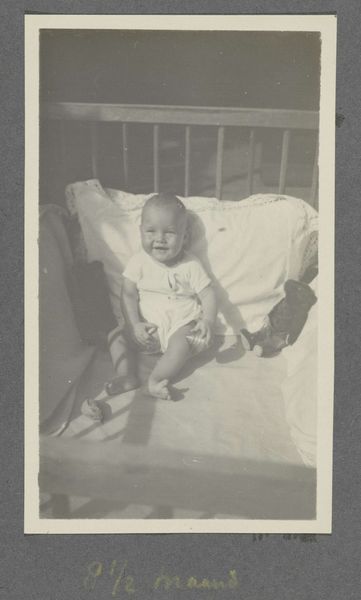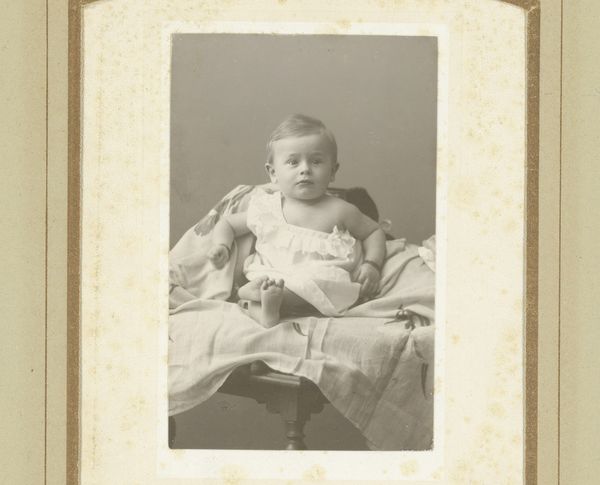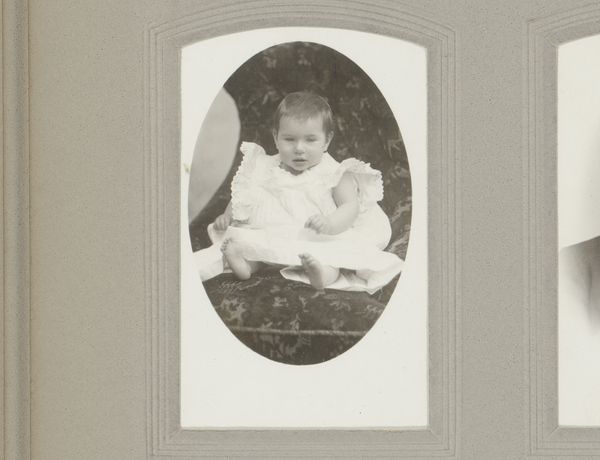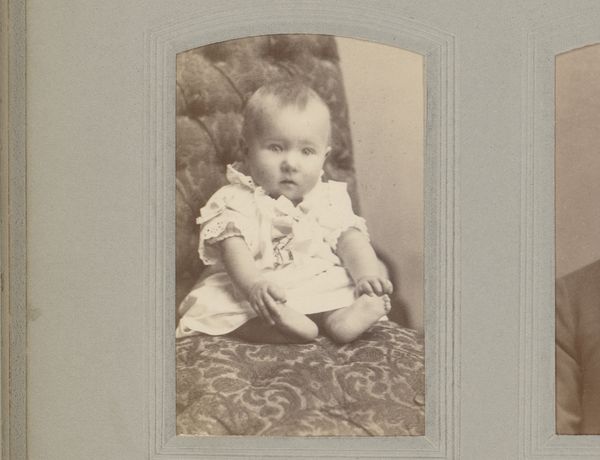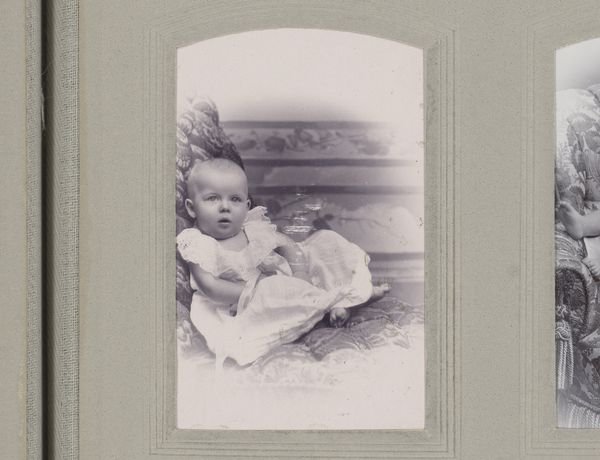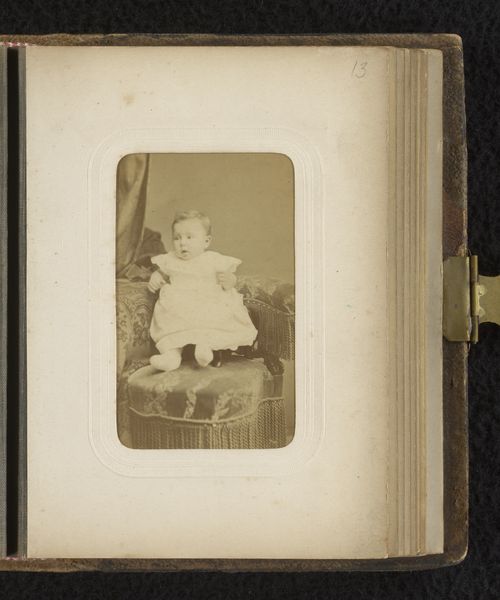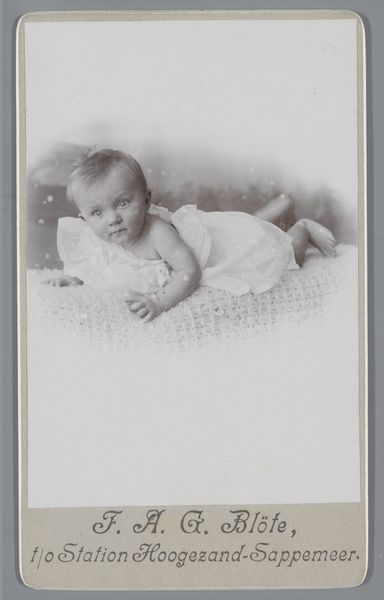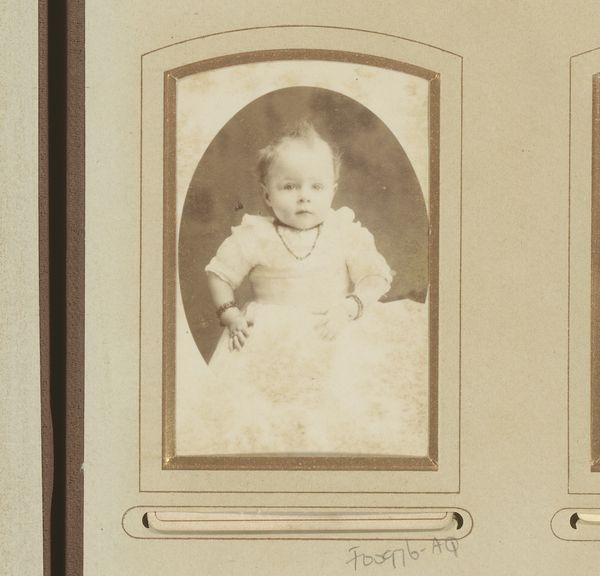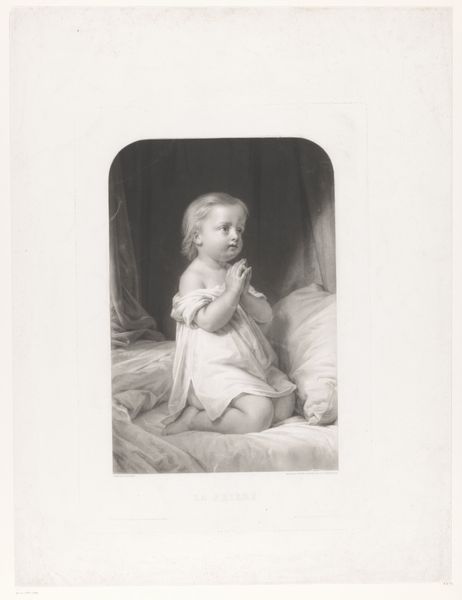
Vier en een halve maand oude baby Klaas Kleiterp voor het eerst in zijn kinderbed in Malang 1920
0:00
0:00
photography
#
pictorialism
#
photography
#
realism
Dimensions: height 61 mm, width 112 mm
Copyright: Rijks Museum: Open Domain
Curator: What a lovely, if somewhat faded, photograph! This image, taken around 1920, depicts "Vier en een halve maand oude baby Klaas Kleiterp voor het eerst in zijn kinderbed in Malang"—or, "Four-and-a-half-month-old baby Klaas Kleiterp in his crib in Malang for the first time." Editor: It has a quiet intimacy. The soft focus and limited tonal range contribute to that serene atmosphere, don't you think? You can almost feel the baby's vulnerability, tucked away in his pristine bed. Curator: Absolutely. This is Pictorialism at play. The photographer is less concerned with objective documentation, as would be typical with realism, and more interested in creating an artistic mood through the photograph. Consider the labor involved in crafting those linens and that clothing; it would have been significant. Editor: Precisely! We must also consider the social and political context. This photograph reflects a very specific, colonial lifestyle. Malang was part of the Dutch East Indies; such domestic scenes played a significant role in constructing ideas around empire and settlement. Curator: True. The setting would determine how this image was constructed and consumed, from the kinds of materials readily available for constructing the scene, to the economic conditions necessary for supporting that particular lifestyle. Who would have been commissioned to make the clothes for the baby, where did they get the textiles, and what were they paid? Editor: Exactly. Think about how images like this were circulated in publications of the time, promoting this idea of civilized colonial life. The soft lighting and intimate perspective romanticized this lifestyle while eliding much more complicated social dynamics. Curator: The formal composition also has an intentionality, almost resembling a staged tableau, underscoring the active role of image-making as social crafting. And it highlights the power structures that uphold that society, and how we see it. Editor: This photo does such an effective job showcasing a time capsule of that era through social codes, labor relations, and representational aesthetics, revealing the layered realities that constituted the Dutch colonial experiment. Curator: Right. Understanding photography requires recognizing its embedded position in systems of production, exchange, and power. Editor: Thank you; this highlights the importance of examining art, photography, and other materials as culturally and historically contingent artifacts that provide unique insights.
Comments
No comments
Be the first to comment and join the conversation on the ultimate creative platform.
